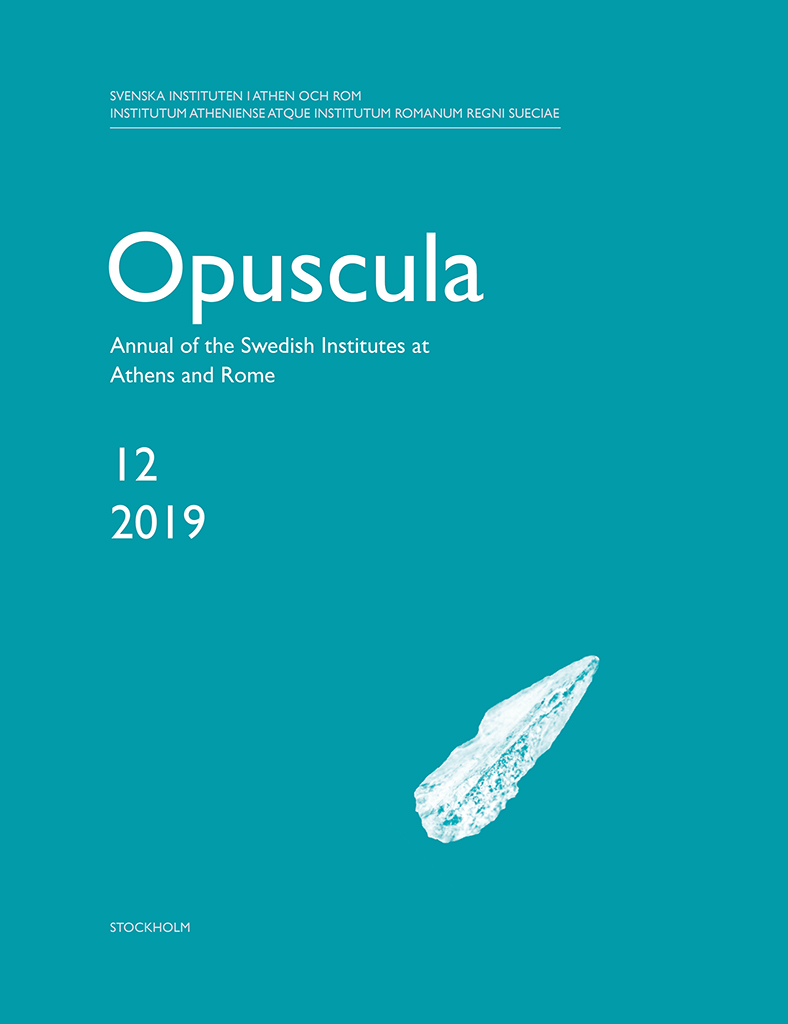All content of Opuscula 12 (2019) is available with open access. Printed edition distributed by Eddy.se AB. Also available at Amazon.com, Adlibris, and Bokus. View volume at ERIH PLUS. Marine and terrestrial molluscs in the sanctuary. The molluscan remains from the 2003–2004 excavations in the Sanctuary of Poseidon at Kalaureia By George E. Syrides (Aristotle University of Thessaloniki, Greece) Abstract This paper presents the hand-collected molluscan remains that were recovered from the excavations in Areas C and D of the Sanctuary of Poseidon at Kalaureia, Poros, in the years 2003–2004. The paper aims at the presentation of the finds and at using the molluscan biological and ethological traits to provide insights into the possible capture methods and use. Land snails are also summarily presented. Bibliographical information George E. Syrides, ’Marine and terrestrial molluscs in the sanctuary. The molluscan remains from the 2003–2004 excavations in the Sanctuary of Poseidon at Kalaureia’, Opuscula. Annual of the Swedish Institutes at Athens and Rome (OpAthRom) 12, Stockholm 2019, 241–254. ISSN: 2000-0898. ISBN: 978-91-977799-1-3. https://doi.org/10.30549/opathrom-12-07 Bioarchaeological remains from the Sanctuary of Poseidon at Kalaureia The section on the bioarchaeological remains from the Sanctuary of Poseidon at Kalaureia, published in the OpAthRom 12, includes seven articles:…
Distributed by Astrom Editions. View record at WorldCat. Pyrgouthi. A rural site in the Berbati Valley from the Early Iron Age to Late Antiquity. Excavations by the Swedish Institute at Athens 1995 and 1997 By Jenni Hjohlman, Arto Penttinen & Berit Wells, with contributions by Yannis Bassiakos, Katie Theodorakopoulou, Hero Granger-Taylor, Sven Isaksson, Petros Lymberakis, Dimitra Mylona, Maria Ntinou, Anaya Sarpaki & George Syrides This volume presents the results of the excavations in 1995 and 1997 at Pyrgouthi in the Berbati Valley, Argolis, Greece. The toponym is the local denomination for a Hellenistic tower, which has always been a prominent in the landscape. In the surface survey of the valley in 1988–1990 the tower was perceived as part of a Classical farmstead and in the ensuing excavation project it was targeted as such. However, the excavations revealed that this interpretation corresponded to but a fraction of the truth. The tower had been built on a knoll in the center of the valley but the earliest human activities at the site can be dated to the end of the Early Iron Age or the eight century BC. At this point in time, Arto Penttinen argues, the archaeological record can be reconciled…


